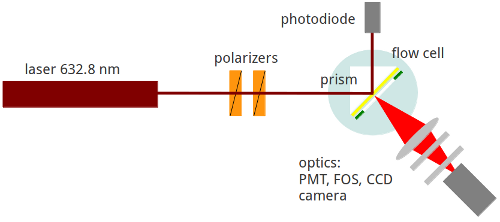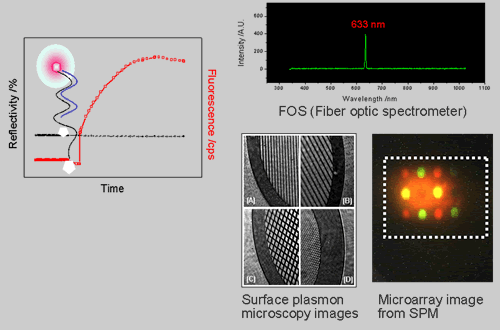Theory - Links
Confocal vs evanescent
Principles of evanescent illumination
Surface plasmons
Label-free detection
Surface plasmon fluorescence spectroscopy
Optical waveguide spectroscopy
Surface plasmon fluorescence spectroscopy
Surface plasmon (field-enhanced) fluorescence spectroscopy (SPFS) uses the greatly enhanced electromagnetic field of a surface plasmon mode for the excitation of surface-confined fluorophores. The general set-up of a SPFS is schematically shown in the figure.

The ability to simultaneously monitor the interfacial refractive index changes and the fluorescence signals in real time offers a huge potential for applications of SPFS in surface immunoreaction detection.
The evanescent field of a surface plasmon is enhanced, compared to the incident field, by a factor of 16 for a gold-water (buffer) interface at the respective resonance angle and then decays exponentially into the dielectric medium, with a wavelength-dependent penetration depth of approximately Lz = 150 nm. In this layer, the accumulation of the analyte molecules alters the optical properties of the interface and can be sensed by an angular shift in the SPR resonance minimum. If fluorescent dyes are carried by the analyte molecules, they can be excited by the electromagnetic field, resulting in a strong fluorescence signal.

